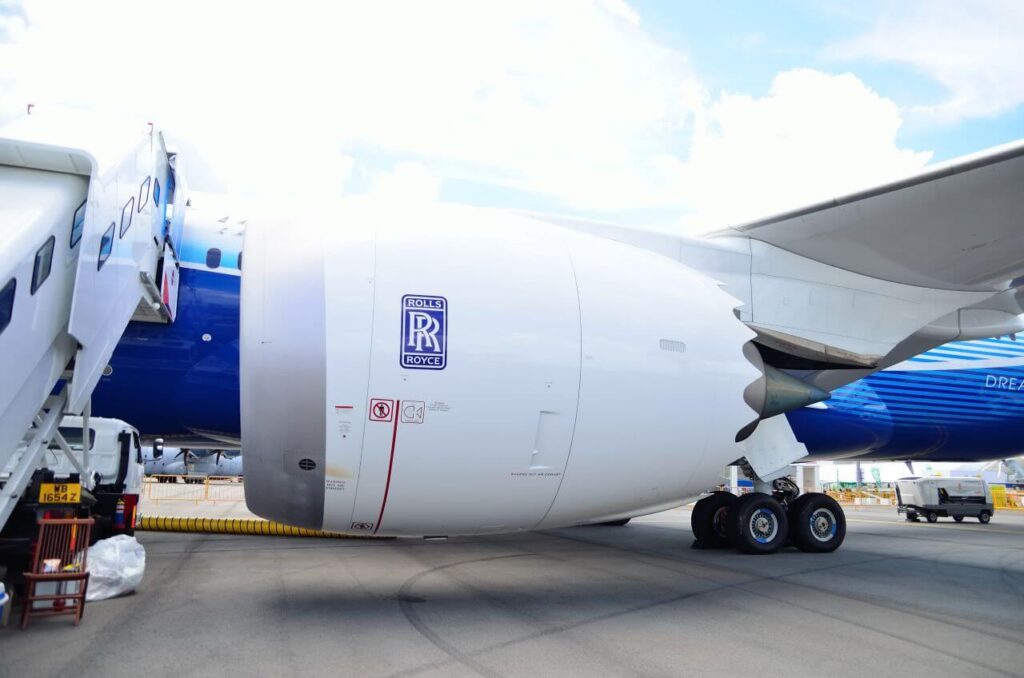The European Union Aviation Safety Agency (EASA) has issued on November 20, 2019, an airworthiness directive (AD) for Rolls-Royce Trent 1000 and Trent 7000 engines. The significance of the regulation? The engines in question are those that power Airbus A330neo jets and Boeing 787 Dreamliners.
The Rolls-Royce Trent 7000 and Trent 1000 are high-bypass turbofan engines: the Trent 7000 was developed specifically for the A330neo, while the Trent 1000 is one of the two engine options for the 787 Dreamliner, the other being GE Aviation GEnx-1B.
The EASA’s directive was issued after cracks were found in the front air seal of the intermediate-pressure compressor (IPC) shaft assembly during stripping of a flight test engine. Follow-up inspections of other in-shop engines revealed two more cracked front air seals of IPC shaft assemblies, the document reads.
“This condition, if not detected and corrected, could lead to IPC shaft failure, possibly resulting in engine in-flight shut-down and consequent reduced control of the aeroplane.”
The regulation requires repetitive on-wing inspections between the fourth (rearmost) seal fin of affected part’s front air seal and the IPC Stage 1 disc. The checks need to be carried out at intervals not to exceed 200 flight cycles. Depending on findings, it could also necessitate the engine’s removal from service for corrective actions by Rolls-Royce.
EASA provides rigorous initial inspections criteria and timelines: if the engine has accumulated 700 flight cycles (FC) or less, the compliance time is before exceeding 500 FC, or within 100 FC after the effective date of the AD (November 27, 2019) whichever occurs later; if more than 700 FC and up to 1000 FC (inclusive), the compliance time is within 50 FC after the effective date of the AD; and if more than 1000 FC – within 25 FC or 30 days whichever occurs first after the effective date of the AD.
The agency has already issued several ADs for the Rolls-Royce Trent 1000 and Trent 7000 engines in October 2019 and earlier in November 2019.
Opting for the competitor on the 787 Dreamliner
Air New Zealand announced on November 18, 2019, it would have to cancel more than 80 international flights, affecting around 14,000 passengers around the peak holiday season due to delays with servicing Rolls-Royce engines. The airline said it would also be making changes to its summer 2020 schedule due to the same issues.
The flag carrier has 13 Boeing 787-9s fitted with Trent 1000 Package C or Trent 1000 TEN engines and is awaiting delivery of one more Trent-equipped Dreamliner.
“We have 14 787-9 Dreamliner aircraft in our fleet and four spare engines to power these. However, all these spare engines are with Rolls Royce offshore either undergoing service or waiting for a service slot,” Air New Zealand senior fleet manager 787 captain Dave Wilson was quoted as saying by Australia’s Travel Weekly.
Air New Zealand, among several other airlines, has been dealing with Rolls-Royce engine problems since 2016. While the issues have not discouraged the kiwi carrier from buying Dreamliners, it has affected its choice of the power plant. In May 2019, the airline signed a firm agreement to purchase eight Boeing 787-10s with an option to increase the order up to 20 aircraft, as well as rights to switch from the larger 787-10 to the 787-9. This time, however, instead of Rolls-Royce, the airline opted for GE Aviation’s GEnx-1B engines to power its new long-haulers.
It might not be surprising then that both Biman Bangladesh, which ordered two 787-9s, and the Republic of Ghana, which signed a memorandum of understanding (MoU) for three jets of the same type at the Dubai Airshow 2019, also selected the GEnx-1B engines to power their new airliners, GE announced. Other customers, including Emirates, which inked an order for 30 787-9 Dreamliners, have not yet revealed their engine choices, but we may almost guess what that might be.

